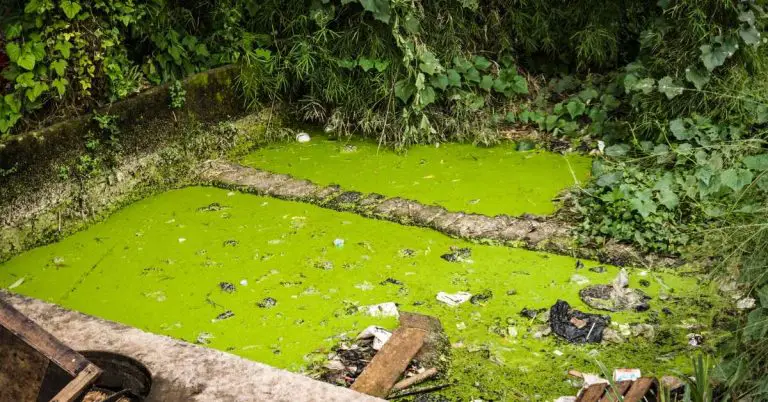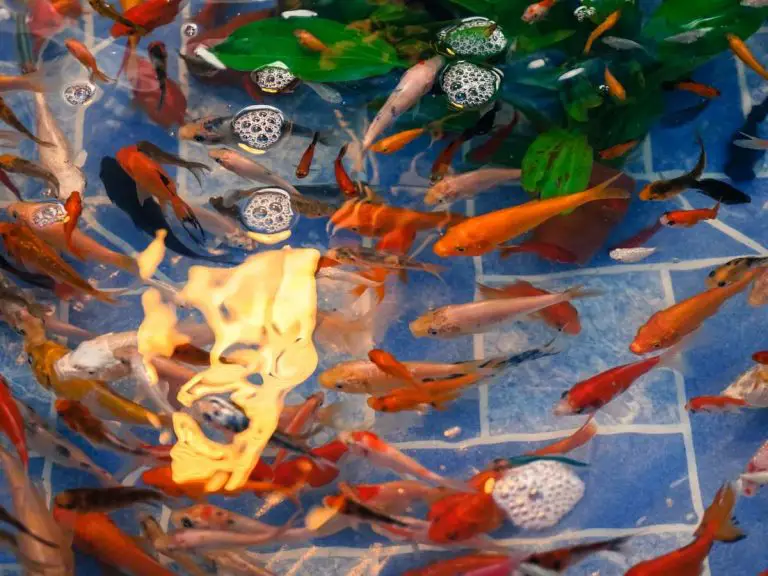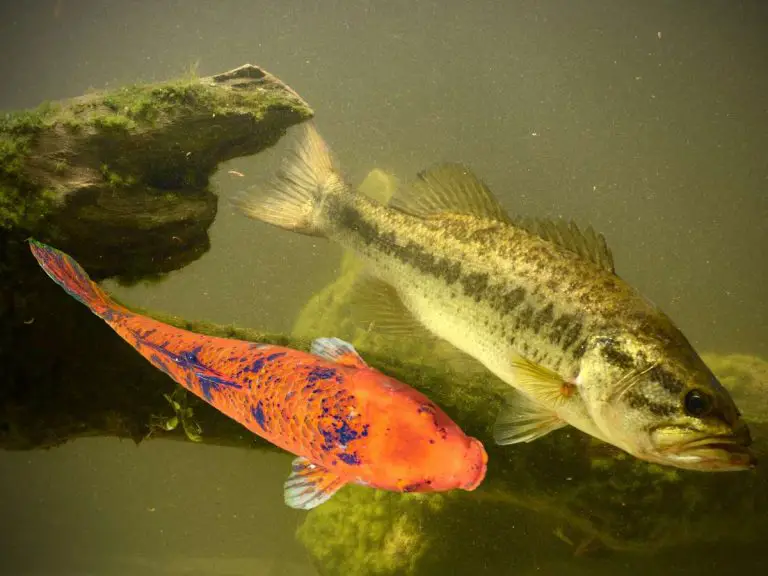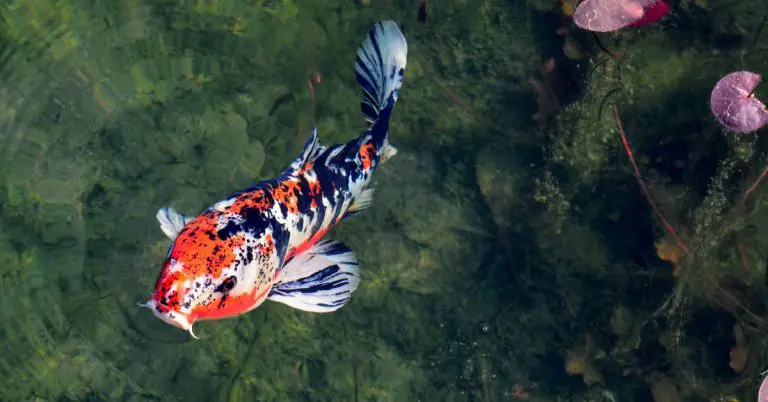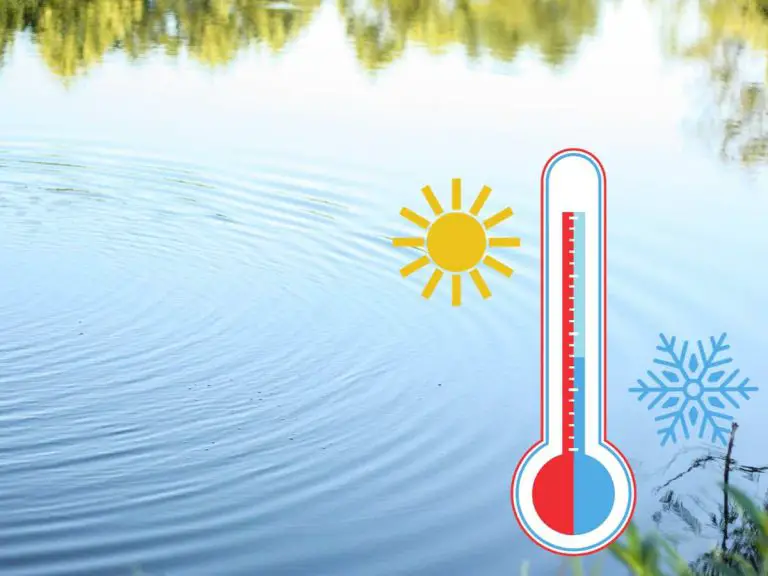Importing Koi Guide: Your Step-by-Step Resource For Safe & Legal Koi Importing
Are you interested in importing koi fish? If you’ve looked into the process, you’re probably aware that it’s not as simple as clicking ‘buy’ on a website and calling it a day.
The process of importing koi involves a delicate dance of ensuring the health and safety of the fish while adhering to international regulations and standards. From legal requirements to the quarantine procedures, transportation methods, and handling techniques, importing koi can be challenging and rewarding at the same time.
This article will guide enthusiasts on how to ensure their prized fish arrive safely, healthily, and within the bounds of the law. We’ll cover everything you need to know about importing koi fish.
We’ll also provide you with a handy checklist for the step-by-step import process. Keep reading to ensure you prized fish arrive safely, healthily, and legally.
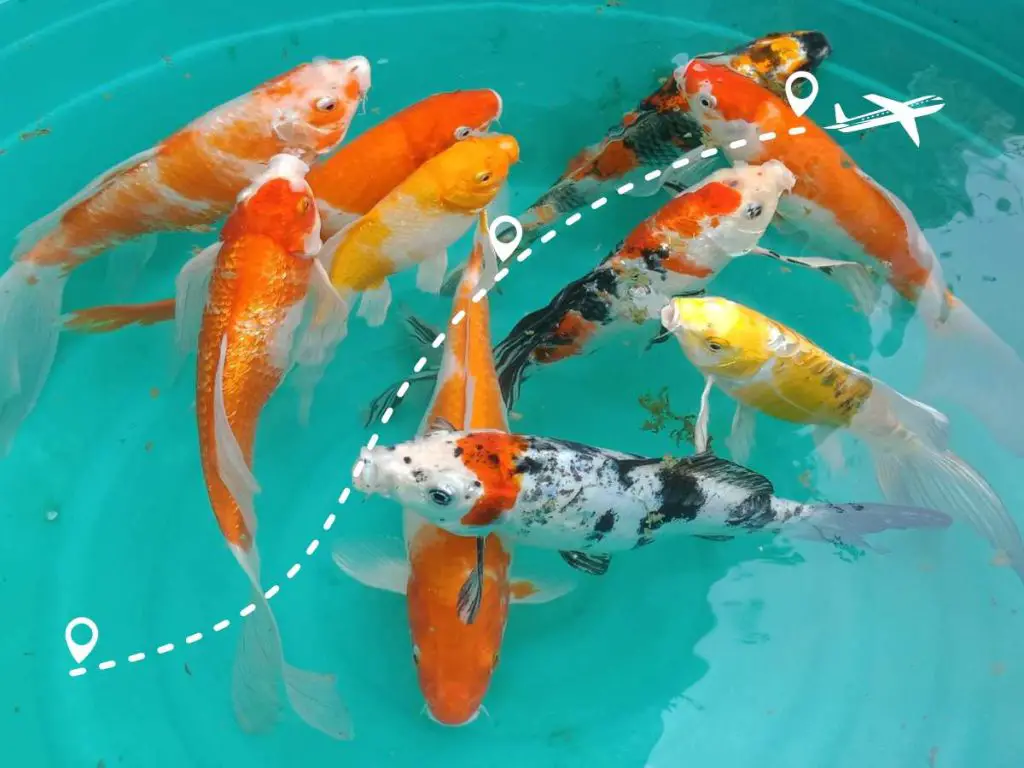
The Process of Importing Koi
The process of importing koi fish involves several steps.
First, you need to research and comply with local and international regulations. This includes obtaining the necessary permits and licenses, as well as following import restrictions and ensuring proper documentation.
Next, you need to set up a quarantine tank or system to prevent disease transmission. Monitoring and maintaining optimal quarantine conditions is crucial during this stage.
Lastly, you’ll need to decide on the right transportation method and ensure proper packaging and securing of the koi for transportation.
Of course, this is an oversimplification of a sometimes complicated process. And that’s not to mention the importance of knowing handling techniques for koi fish, how to acclimate them to their new environment, and where to find reputable suppliers and exporters (all of which we’ll cover below).
Legal Requirements for Importing Koi Fish
Okay, let’s dive into the nitty-gritty of importing koi fish. The first thing you need to know is that there are some legal hoops you’ll have to jump through. It’s not as simple as just buying a bunch of beautiful koi and having them shipped to your doorstep.
First off, you’ll need to do some research. Find out what the local and international regulations are regarding importing koi fish. Each country and even different regions within a country may have their own specific rules and restrictions. It’s important to be well-informed to avoid any legal troubles.
For example, people in the United States may want to start by reading the USDA guidelines for imporing Fish, Fertilized Eggs, and Gametes.
Next, you’ll need to obtain the necessary permits and licenses. This will vary depending on your location and the specific requirements of the importing country. You may need to apply for an import permit, a quarantine permit, or even a CITES (Convention on International Trade in Endangered Species) permit if the koi species you want to import is protected.
Once you have the permits and licenses sorted out, you need to comply with import restrictions and documentation. This means providing all the required paperwork, such as health certificates, export and import declarations, and any other documentation required by the relevant authorities. Make sure you have everything in order to avoid any delays or complications during the import process.
Quarantine Procedures for Imported Koi
Quarantine is an essential step in the process of importing koi fish. It plays a crucial role in preventing the spread of diseases to your existing fish population.
You wouldn’t want to introduce a sick fish to your pond and risk infecting all your beautiful koi! And that means you do want to set up quarantine. Here’s how.
Set up a quarantine tank or system
Before bringing your imported koi fish home, you need to prepare a dedicated quarantine tank or system. This separate space allows you to closely monitor and observe the health and behavior of the new arrivals without any interaction with your existing fish.
Monitor and maintain optimal quarantine conditions
Now, let’s talk about how to ensure the best conditions for your quarantined koi.
First and foremost, you need to monitor the water quality regularly. Keep an eye on pH levels, ammonia, nitrate, and nitrite levels. Maintaining optimal water conditions will help your koi stay healthy and stress-free during their quarantine period.
Fish Quarantine Checklist:
1. Check water parameters daily, including pH, ammonia, nitrate, and nitrite levels.
2. Keep the water temperature stable, between 68°F to 77°F (20°C to 25°C), as sudden temperature fluctuations can be harmful to koi.
3. Use a high-quality water filter to maintain excellent water quality and remove any potential contaminants.
4. Perform regular partial water changes to prevent the accumulation of toxins.
5. Carefully monitor the koi’s behavior, appetite, and overall appearance. Look out for any signs of illness, such as changes in color, lesion, or unusual swimming patterns.
6. Consult a veterinarian or koi expert immediately if you notice any signs of disease or abnormality in your quarantined fish.
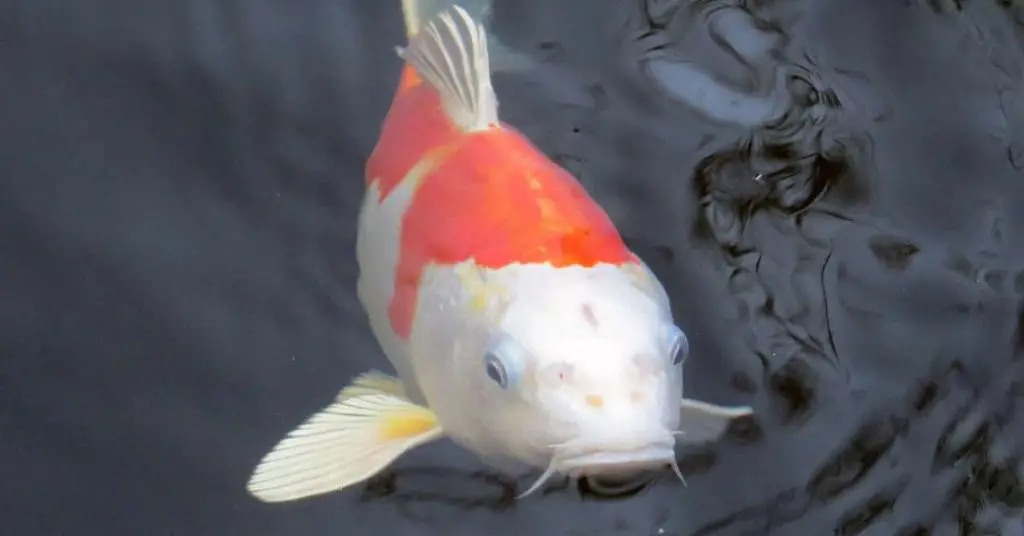
Transportation Methods for Importing Koi
When it comes to transporting koi fish, you have two main options: air or road. The choice you make will depend on factors such as distance, cost, time sensitivity, and the availability of suitable transport services in your area.
If you’re importing koi from a distant country, air transportation is often the fastest and most efficient method. Airlines have specialized procedures for handling live animals, ensuring their safety and well-being during the journey. However, air transport can be expensive, especially for long distances.
If your koi fish are being imported within your own country or from a nearby location, road transport might be a more practical choice. This option allows for more control over the transportation process and can be more cost-effective for shorter distances.
Finally, whichever method you choose, be sure to find a reputable transportation company that has experience in handling live animals.
Packaging and securing koi for transportation
Proper packaging is crucial to ensure the safety of your koi fish during transportation. The key is to minimize stress and provide a comfortable environment for the fish throughout the journey.
Koi should be carefully placed in sturdy plastic bags filled with water and oxygen. The bags should be securely closed to prevent any leakage or spills. These bags can then be placed inside a suitable container, such as a foam-insulated box, to provide additional protection and insulation.
It’s important to label the packaging clearly with the necessary information, including the destination address and contact details. This will help ensure that your koi fish are delivered to the right location and that any issues can be resolved quickly.
Considerations for long-distance transportation
If you’re importing koi fish from a significant distance away, there are some additional considerations to keep in mind. Firstly, make sure that the transportation duration is as short as possible to minimize stress on the fish.
It’s also a good idea to communicate with the seller or exporter to coordinate the shipping date with the arrival date. This will ensure that someone is available to receive the fish and provide them with the necessary care immediately upon arrival.
Lastly, consider the weather conditions during transportation. Extreme temperatures, either hot or cold, can be detrimental to the well-being of koi fish. If necessary, use insulating materials or temperature-controlled transport options to mitigate any potential risks.
Important Handling Techniques for Imported Koi Fish
When it comes to handling imported koi fish, there are a few key techniques that will help ensure their well-being in their new environment. Proper handling is crucial for minimizing stress and allowing the koi to settle in smoothly.
Acclimating koi to the new environment

Before introducing your imported koi to their new home, it’s important to acclimate them gradually. This helps them adjust to the water conditions, temperature, and any other differences they may encounter. One way to do this is by using the drip acclimation method. Start by floating the bag containing the koi in the water, allowing the temperature to equalize. Then, slowly add small amounts of water from the tank to the bag while draining some out, over a period of several hours. This gradual introduction will give the koi time to adapt without experiencing sudden changes in water parameters.
Minimizing stress during handling and transfer
Moving koi from one location to another can be stressful for them, as it disrupts their routine and exposes them to unfamiliar surroundings. To minimize stress during handling and transfer, it’s important to use soft nets or properly wetted hands when touching the koi (knowing how to hand feed koi gently can also help).
Additionally, avoid excessive chasing or catching attempts, as this can cause unnecessary stress. It’s also crucial to ensure that the transportation containers or bags are secure and provide enough space for the koi to move comfortably.
Proper techniques for netting, bagging, and releasing koi
When it comes to handling koi with nets, it’s important to choose nets with soft and gentle mesh to avoid injuring their delicate fins or scales. It’s best to slowly guide the koi into the net rather than making sudden movements. When bagging the koi for transportation, use oxygenated bags that are properly sealed to prevent any leaks during transit. Once you’ve transported the koi to their new location, it’s important to release them gently into the water. Avoid dropping them from a height, as this can cause unnecessary shock or stress. Instead, gently release the koi into the water, allowing them to swim out of the bag at their own pace.
More Resources for Importing Koi Fish
When it comes to importing koi fish, it’s crucial to find reliable and reputable suppliers and exporters. These are the people who will ensure the health and well-being of your precious koi from start to finish. So where do you find them? Well, the internet is your best friend in this case. Do some thorough online research and look for koi suppliers and exporters with a good reputation. Check out their websites, read reviews, and see if they have any certifications or awards. It’s always better to go for established sellers who have been in the business for some time.
Ultimately, it’s easy to find the best places to buy koi online when you do a little digging!
Utilizing online platforms and forums for information and advice
Once you have a list of potential suppliers and exporters, it’s time to dig deeper. Take advantage of online platforms and forums dedicated to koi fish enthusiasts. These online communities are full of people who share the same passion for ponds and koi. They can provide valuable insights and recommendations based on their personal experiences. Don’t be afraid to ask questions, seek advice, and engage in discussions. You’ll be surprised at how helpful and friendly fellow koi enthusiasts can be.
Engaging with local koi associations or clubs for guidance
If you want to get even more involved in the koi community and gain expert guidance, consider reaching out to local koi associations or clubs. These organizations are a treasure trove of knowledge and expertise. They often hold regular meetings, workshops, and events where you can meet experienced koi keepers and breeders. They can share valuable tips, offer guidance on importing koi, and even connect you with trusted suppliers. It’s a great way to immerse yourself in the world of koi and make meaningful connections with like-minded individuals.
Your Complete Checklist for Importing Koi Fish
| Step | Description |
|---|---|
| 1 | Research and Documentation – Understand local and international regulations. Obtain necessary permits, licenses, and documentation. |
| 2 | Find a Reputable Supplier – Seek suppliers with good reviews and recommendations. Ensure they follow proper breeding and handling practices. |
| 3 | Arrange Transportation – Decide on transportation method (air or road). Choose a reliable shipping company with experience in transporting live fish. |
| 4 | Prepare for Quarantine – Set up a quarantine tank or system. Ensure it’s properly cycled and equipped. |
| 5 | Acclimate the Koi Fish – Gradually introduce koi to the quarantine tank. Monitor their behavior and health. |
| 6 | Monitor and Care for the Koi – Regularly check water parameters. Maintain feeding schedule and observe fish for signs of illness. |
| 7 | Release into the Pond – After quarantine, release the healthy koi into your pond. Monitor their behavior in the new environment. |
| 8 | Seek Expert Advice – Consult experienced koi enthusiasts, local koi associations, or online forums for guidance and advice. |
When it comes to importing koi fish, being organized and prepared is key. To help you navigate the process successfully, here is a step-by-step checklist to ensure you have everything covered:
Step 1: Research and Documentation
Start by researching the local and international regulations regarding the importation of koi fish. Make a checklist of all the necessary permits, licenses, and documentation required for your specific location. This will vary depending on where you are importing from and the regulations of your country.
Step 2: Find a Reputable Supplier
Look for reputable koi fish suppliers or exporters who have been in the business for a while. Read reviews and seek recommendations from other koi enthusiasts. Make sure they follow proper breeding and handling practices, and that their fish are healthy and disease-free.
Step 3: Arrange Transportation
Decide on the best transportation method for your situation. Whether it’s air or road, you’ll need to consider the distance, time, and cost. Ensure that the shipping company or carrier you choose has experience with transporting live fish and has proper equipment to maintain the ideal conditions for the koi.
Step 4: Prepare for Quarantine
Set up a quarantine tank or system before the arrival of your koi fish. Make sure it is properly cycled and equipped with the necessary filtration system. This will minimize the risk of introducing any diseases or parasites to your existing pond or fish.
Step 5: Acclimate the Koi Fish
Once the koi fish arrive, it’s important to acclimate them to their new environment gradually. Slowly introduce them to the quarantine tank, allowing them time to adjust to the water temperature and conditions. Keep a close eye on their behavior and overall health during this period.
Step 6: Monitor and Care for the Koi
Regularly monitor the water parameters, such as ammonia, nitrite, and pH levels, to ensure they remain within the appropriate range. Perform water changes as necessary and maintain a consistent feeding schedule. Additionally, observe the fish for any signs of illness or stress.
Step 7: Release into the Pond
After the quarantine period, and once you are confident the koi fish are healthy and disease-free, it’s time to release them into your pond. Take care when netting and transferring them, ensuring minimal stress during this process. Monitor their behavior in the pond to ensure a smooth transition.
Step 8: Seek Expert Advice
If you are new to importing koi fish or have any doubts or questions along the way, don’t hesitate to seek advice from experienced koi enthusiasts, local koi associations or clubs, or even online forums. They can provide valuable insights and guidance to help you navigate the import process successfully.
Key Takeaways
So there you have it, all the ins and outs of importing koi fish. It’s not a simple process, but with proper knowledge and preparation, it can be a rewarding one.
Let’s quickly recap the main points:
- Research local and international regulations and obtain necessary permits and licenses.
- Set up a quarantine tank or system to prevent disease transmission.
- Choose the right transportation method and package the koi securely.
- Handle the koi with care to minimize stress and ensure a smooth transition.
- Utilize online platforms, forums, and local koi associations for resources and advice.
Remember, importing koi fish requires attention to detail and adherence to guidelines. But don’t let that discourage you. It’s also an opportunity to bring beautiful and unique koi into your pond, enriching your pond-keeping experience. Take advantage of the resources available to you, seek expert advice, and enjoy the journey of importing these mesmerizing creatures. Good luck on your koi fish importation adventure!
Related Questions
How much does it cost to import koi fish?
Importing koi fish can vary in cost depending on factors such as the quantity of fish, the distance of transportation, and any additional expenses for permits and quarantine procedures. It is recommended to research and contact reputable koi suppliers or exporters for specific pricing information.
Can I import koi fish for personal use?
Yes, it is possible to import koi fish for personal use. However, it is essential to comply with local and international legal requirements, obtain necessary permits and licenses, and follow quarantine procedures to ensure the health and safety of the fish and the local environment. It is advisable to research and consult with experts or local authorities to ensure proper adherence to all regulations.

